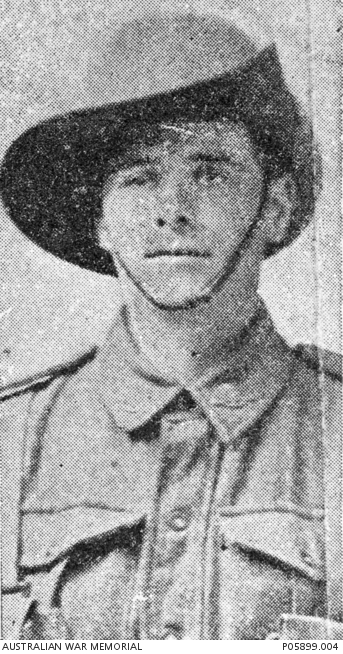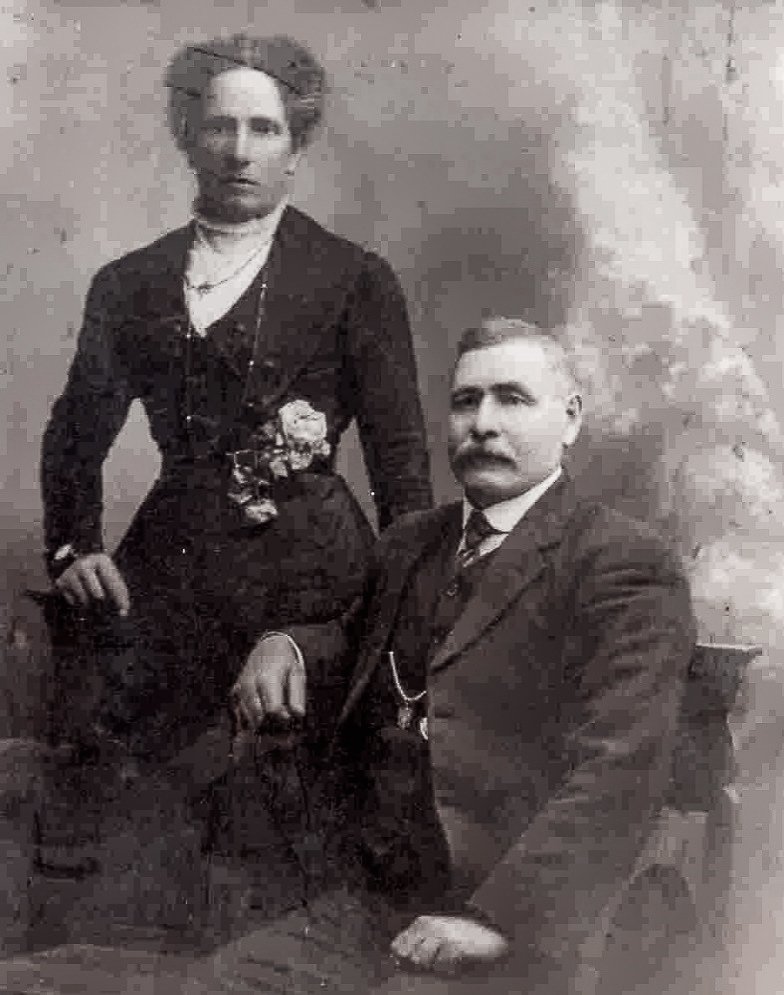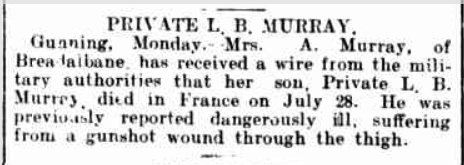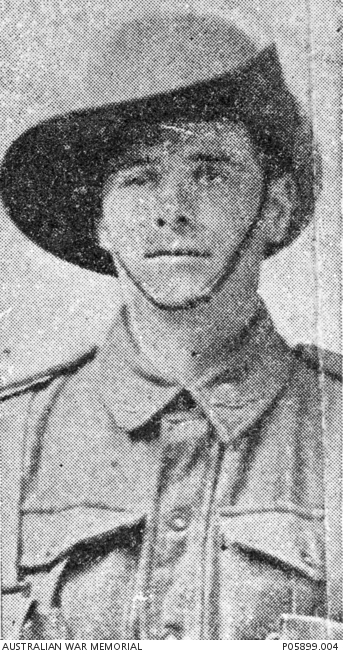Lindsay Bertram MURRAY
Eyes blue, Hair light brown, Complexion fair
Cousins - A story of Goulburn farming families
In preparing this story, we are most grateful for the continuing input and research by family members, Lynne Tocher and Edith Medway.
This is, in part, the story of two close families and two close mates buried in France - Lindsay Bertram Murray 1892-1916 from Breadalbane west of Goulburn and his cousin, Harry (Henry Robert) Grubb 1895-1916 from Towrang east of Goulburn. The young men were the sons of two sisters, Arabella and Marian May Peters who were closely connected to many families in the Goulburn area.
Arabella and Marian were very close having lost their mother, Anna, when they were just 16 and 14 years of age respectively. Anna died in 1883 giving birth to twin boys, Andrew and Septimus, who, in addition to four other younger siblings, were then left in the care of the two teenaged sisters. Only brother Henry was older who at 18 would have worked on the farm. The extended connected families and neighbours would have been of great support at this time.
Arabella married Tom Murray in 1888 while Marian married Arthur Grubb in 1894. Lindsay Murray was the third child of 10. Harry Grubb was the eldest of 8 children.
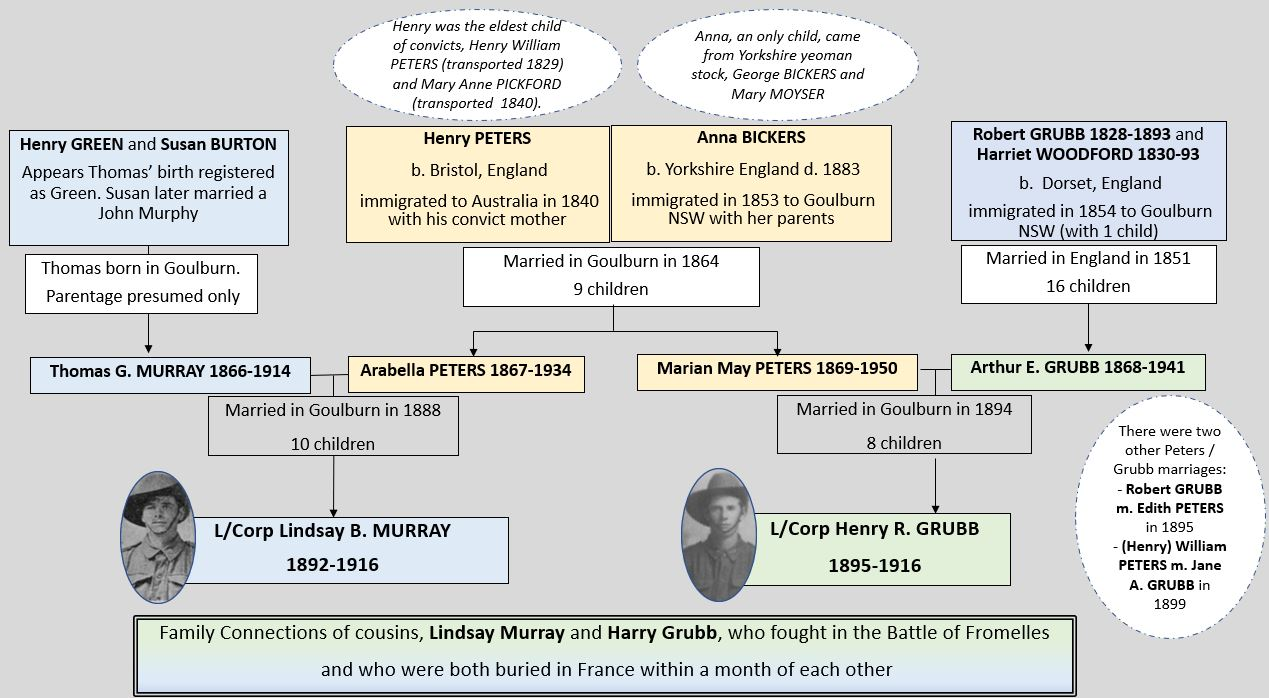
Tragically, for the families and the broader Goulburn communities, Arabella & Marian lost their sons at much the same time – both were buried far away on the battlefields of France. Both sons fought in the Battle of Fromelles.
The Murray Family

Lindsay was the first son to Arabella (nee Peters) and Tom Murray. He was born on 8 October 1892 at Breadalbane in NSW - the much-longed for son that farmers craved. He had two older sisters, Elsie born in 1889 and Edith (Edie) born in 1890. Although there were six more children, these three older siblings were very close as the next child, Cecil, born 1894 died in 1898, left a gap of six years to the next child, Arch, born in 1898.
Before we go to Tom and Arabella Murray’s story, family member, Lynne Tocher, acknowledges the memoirs written by two of their grandsons – Tom Davison and Lindsay Murray (jnr), both now deceased. Their recording and generous sharing of the family story, photos and documents has been invaluable in understanding Lindsay’s story.
Tom and Arabella were farmers, attempting to turn virgin land into a profitable property. This was not easy with just brawn as money was very tight and they were raising a large family of nine surviving children. For extra cash, Tom worked on the railway when such work was available. He was described as ‘a good adze man’ and helped with the shaping of timbers used on the building of bridges over the creeks and culverts.
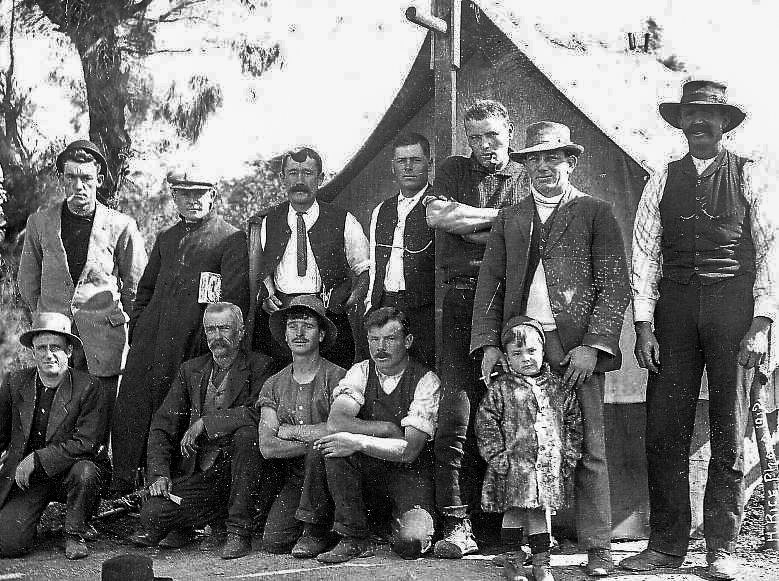
With Tom absent a great deal, the day-to-day farm work fell to Arabella and, as the children grew, they also worked hard on the property. As a consequence, the children’s education was sketchy although they were literate.
When he was old enough, Lindsay also worked for the NSW Government Railways and he is named on the NSW Government Railways and Tramways Roll of Honour - 1914-1919.

There was nothing extraordinary about Lindsay - he was just an average country lad of his era. He had attended the local Breadalbane Public School, he could ride a horse and it is highly likely that he could shoot - a 22 rifle, Lynne presumes, as that was the gun commonly used for food for the pot, kangaroo and rabbit.
Enlistment and off to war
Enlisting for the army would have been a particularly momentous decision for young Lindsay as his father, Tom, died 27th December 1914 leaving Arabella a widow with responsibility for running the farm and the care of six children, ranging in age from 15-year-old Arch to six-year-old Doris. Possibly Lindsay and his mother, Arabella, gave considerable thought to all that was entailed and the levels of support available for her if he answered the call to enlist. Both Edie and Elsie were married by early 1915.
In any event, 22-year-old Lindsay signed up in Goulburn on 30th July 1915 with his attestation papers giving his height as 5 feet 6½ inches, his weight as 148 pounds (about 10 and half stone), and his religion as Church of England. Australian Army records are prolific - Lindsay‘s file has 49 pages but many soldiers have far more. Unlike the navy. Lynne Tocher notes that her father’s naval records from WWll consist of a card with information on the front and rear only. They do call the navy the silent service!
Exactly 12 months after his enlistment Lindsay was dead at twenty-three.
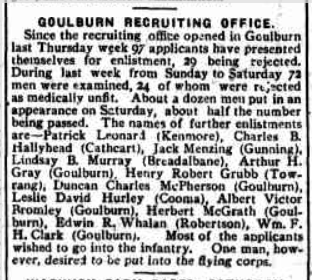
Lindsay’s younger cousin, Harry Grubb, enlisted on the same day and they may have trained together at the Liverpool camp, though there were assigned to different units.
Lindsay embarked on 13 October 1915 for Egypt with the 4th Battalion while Harry left on 2 November with the 20th Battalion. Before leaving Australia, Lindsay had his final leave at home with his family at Breadalbane and local residents presented him:
"with a gold wristlet watch and a gold mounted fountain pen."
Not long after arriving in Egypt, Lindsay wrote to his sister, Edith, saying that he had had a good trip over and had not got seasick. The letter dated 23 November 1915 goes on to say that they “are tired after drilling all day in the sand”. The heat and desert sands of Egypt must have been a confronting new world to a country boy from New South Wales – but he was keen to do his best.
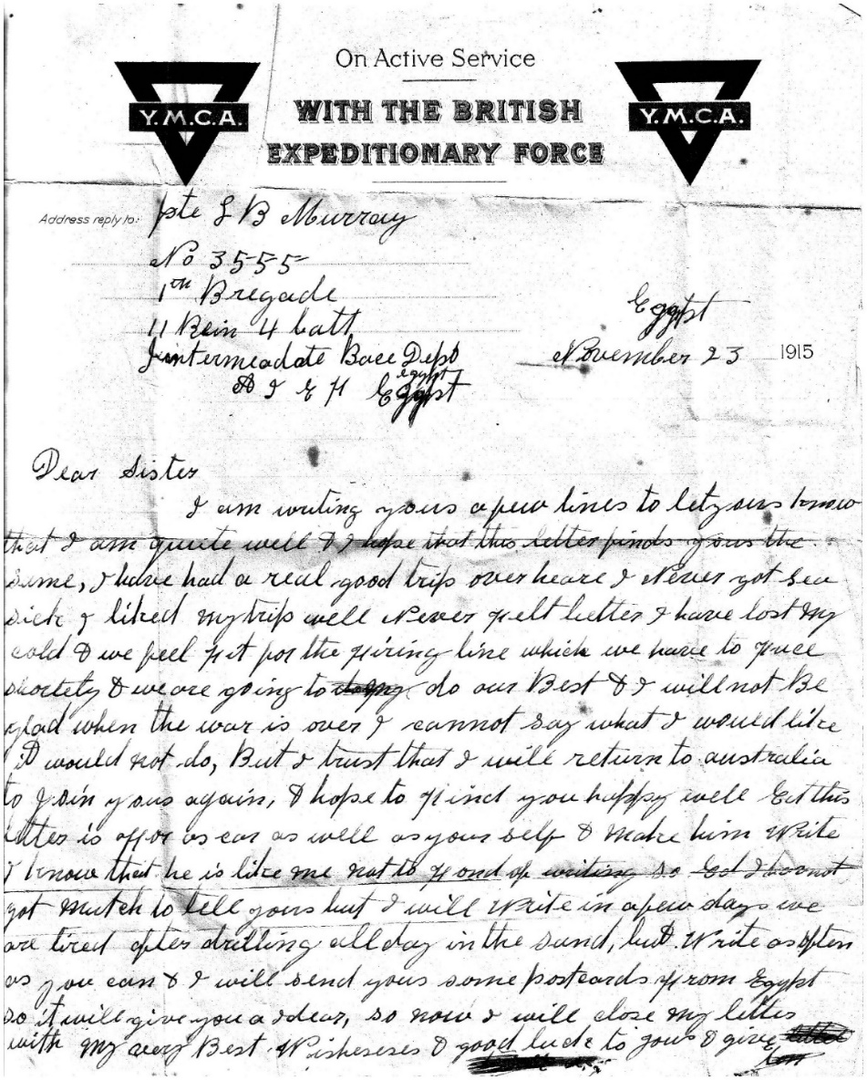
Just weeks after writing this letter home, Lindsay was hospitalised with mumps. Many young men in the close quarters of army camps and aboard ships contracted infectious diseases like mumps and measles. Lindsay spent about a month in the No. 4 Auxiliary Hospital in Abbassia on the outskirts of Cairo and was discharged on 6 January 1916 to return to camp and to continue training.
On 16 February, Lindsay was transferred to the 53rd Battalion as part of the re-organisation of Australian troops. Training, including strenuous cross-country marches, continued at camps at Tel-El-Kebir and Ferry Post and on 8 May 1916, Lindsay was promoted to Lance Corporal. His cousin, Harry Grubb wrote home in June 1916 noting that he had seen:
“Lin Murray last night. He had one stripe on. He seems to be in a good company, and I am going to try and transfer into it.”
Harry’s other comments indicate a keenness to leave the heat of Egypt behind. See part of Harry’s letter below.
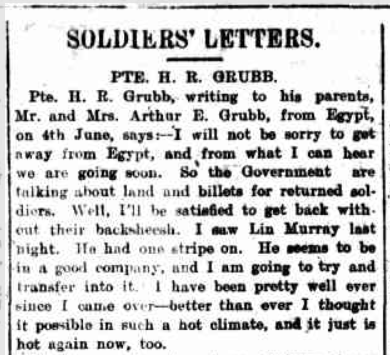
To France
In June, the 53rd Battalion left Egypt arriving in Marseille on 28 June 1916. They then had a 62-hour train ride to Thiennes and the Battalion war diaries (AWM) noted that their ‘reputation had evidently preceded them’, as they were well received by the French at the towns all along the route. After several days marching the remaining 35 kilometres to Fleurbaix, they were settled into billets on 16 July by 0300 hours.
They were moved straight into the front lines on the 17th, preparing for an attack, but it was cancelled by bad weather. They remained in the trenches on the 18th in relief of the 54th.
For their first major battle, the 53rd would be attacking in the centre of the Australian forces, with the British troops on their right. They were to make an impossible dash of 200 to 300 meters across open fields guarded by the “Sugar Loaf” – an elevated concrete bastion which provided heavy enfilading fire along an extensive area of no man’s land. The Sugarloaf, and the remainder of the front was protected by a myriad of machine guns emplacements, trained on the open ground.
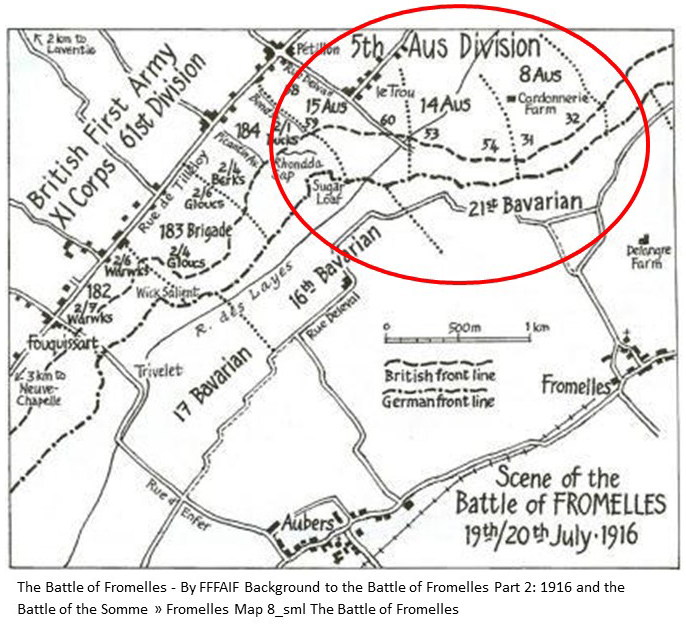
By 11.00am on the 19th, heavy bombardment was underway from both armies. No doubt the men were nervous, but excited and probably scared.
At 4.00pm the 54th Battalion rejoined the 53rd on their left and all were now in position and prepared for an attack.
The Australians went on the offensive at 5.43pm. There were four waves from the 53rd, half of A and B Companies in each of the first two waves and half of C and D in the third and fourth.
Lindsay was in A company so he would have been in the first waves. These two waves did not immediately charge from the Australian line, but went out into No Man’s Land and laid down, waiting for the British bombardment to lift.
At 6.00pm, the Germans were rushed, their front line captured and the Australians headed for the second line.
The 53rd succeeded in taking the German first and second line trenches, linking up with the 54th on their left, but no support came from the right, which was directly across from the heavily defended machine-gun emplacement at the Sugar Loaf salient.
By 9.00am on the 20th, the 53rd received orders to retreat from positions won and by 9.30am they had ‘retired with very heavy loss’. Of the 984 men who had left Alexandria in Egypt just weeks ago, 372 were killed or missing and 335 were wounded. By 4.30pm the remains of the Brigade assembled at HQ.
Wounded and dying
Australian military historian C.E.W. Bean wrote:
“By dawn on the 20th they had no choice but to withdraw, leaving many wounded behind………the wounded could be seen everywhere, raising their limbs in pain or turning helplessly hour after hour from one side to another. The scene on the Australian Trenches, packed with wounded and dying was unexampled in the history of the AIF”.
It is not known definitively but it is likely that Lindsay was one of those lying wounded in No-man’s-land. He was reported missing on 19th July and only admitted to an Australian Casualty Clearing Station on 22nd July 1916 – three days after the Battle of Fromelles began.
He was transferred on 24 July to No.32 Stationary Hospital at Wimereux, about 150 kilometres away on the coast, just south of Calais. His wounds were listed as including a gunshot wound to the right thigh, a broken femur and gas gangrene. He died at Wimereux on 28th July 1916 and was buried at the Wimereux Cemetery on the same day. He was 23 years and 10 months old.
News for the family
A telegram from Melbourne Base Records date stamped in Breadalbane on 31 July 1916 was the first news that the Murray family received about Lindsay. Addressed to his mother, Arabella, the telegram advised that Lindsay was dangerously ill as a result of his wounds and that they would provide progress reports when received.
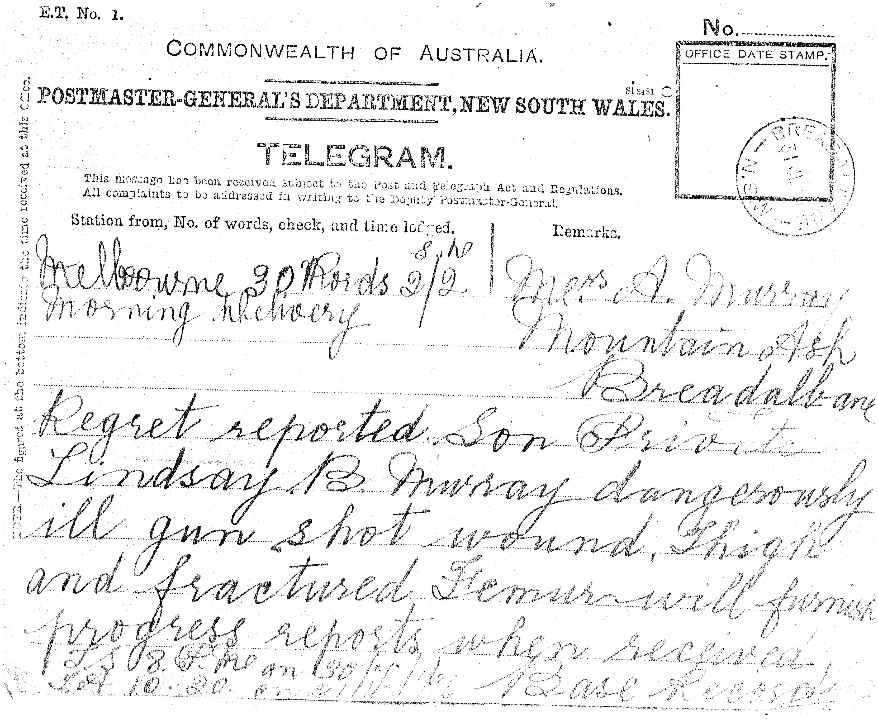
Sadly, the news that was to follow just days later was to advise that Lindsay had died from his wounds and had been buried in France.
Unlike many families, Arabella was fortunate to also receive a personal letter of condolence signed by Captain Towse of the Gordon Highlanders. This personal touch gave comfort to family members to know in more detail how their loved ones fared in their final hours. This letter was dated 29 July 1916 but it is likely that it arrived in Australia some weeks later once the family was well aware of the death of their loved one.
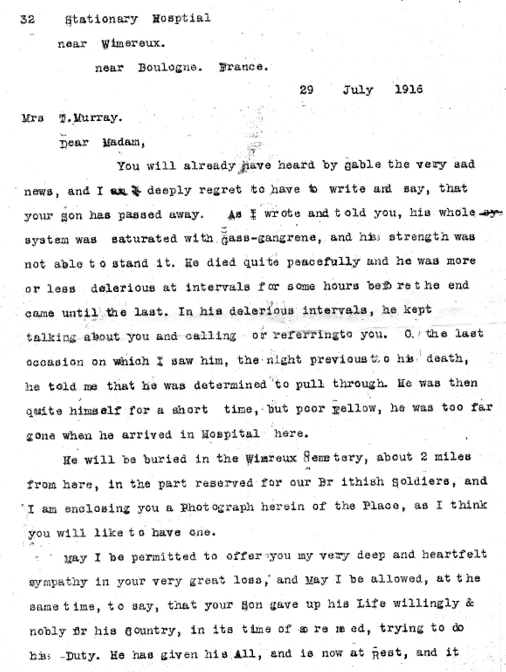
Arabella mourned her son for many years taking comfort in her strong religious faith and playing the organ in church. Lindsay’s AIF file shows Arabella dealing with correspondence from the military authorities in relation to his death, his grave and his military medals and memorial plaque. The file also shows that she eventually received Lindsay’s personal effects – his identity discs, post cards, photos, letters, 2 wallets, coins, and a cotton bag.
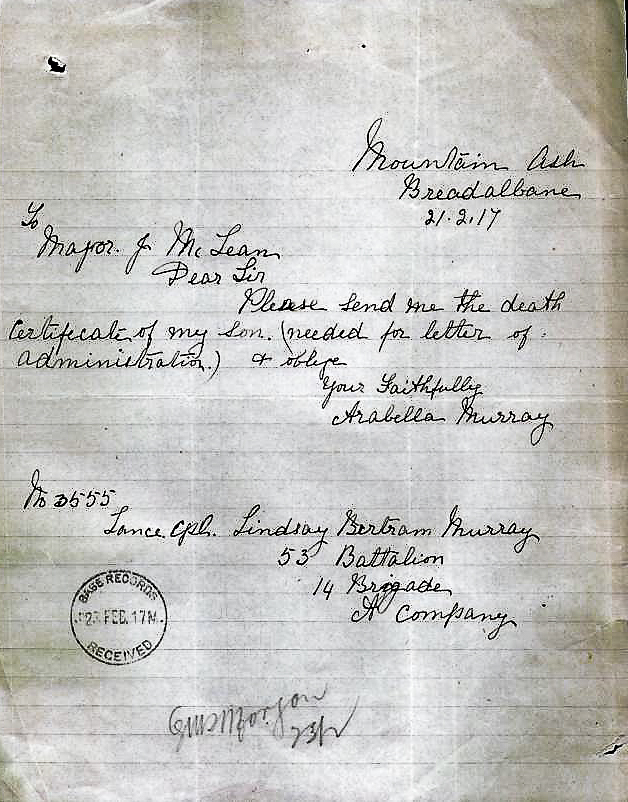
Arabella was also awarded a pension of £2 per fortnight after Lindsay’s death and she successfully ran the farm with her remaining two sons. One of her grandsons (Tom) recalled Arabella drying fruit from the orchard on wooden racks and whitening the front doorstep using clay sourced from a secret spot on the property. Another grandson (Lindsay) recalled her keeping beehives, extracting the honey herself to sell in 4-gallon tins and melting down bees wax to exchange at the soap factory for soap and floor polish.
Arabella died aged 67 on 26 September 1934 and is buried with her husband in the Breadalbane cemetery. The headstone also honours their son, Lindsay, who died in France “for his King and country”.
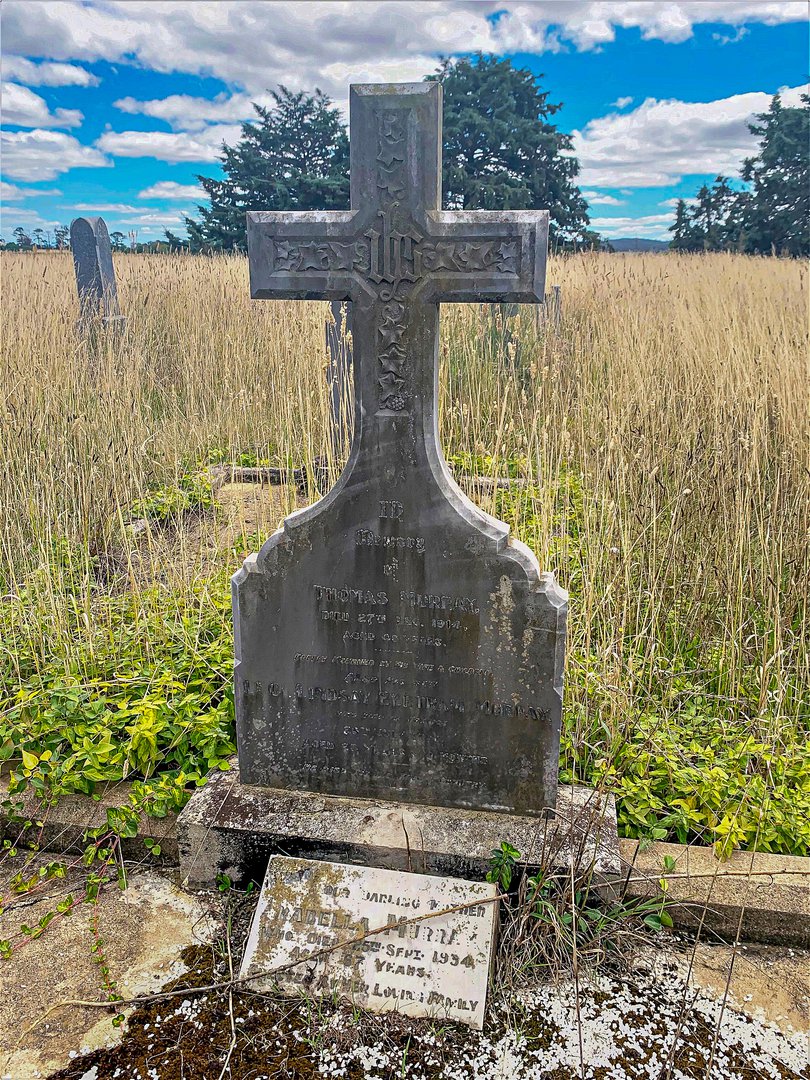
Lindsay – Remembered always
The primary memorial for Lindsay is, of course, where he is buried at Wimereux, a coastal town in the north of France. The cemetery includes both military and civilians and it is unusual in that the tombstones generally lie flat on the ground because of the sandy soil.
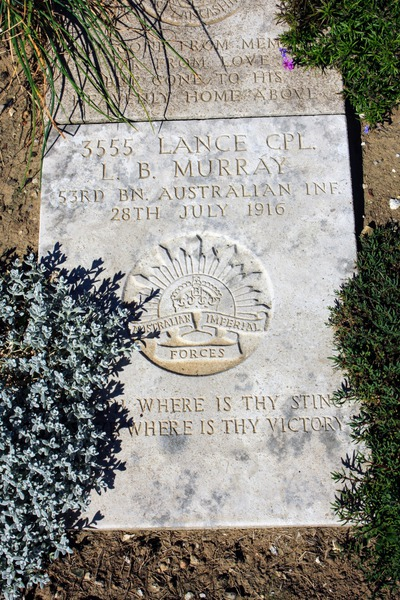
Back home in Australia, the family also ensured that Lindsay was remembered. He is one of two local soldiers commemorated on the gates of the former site of the Anglican Church, Mutmutbilly Road, Breadalbane. The inscription reads
In Memory of L. Cpl L. Murray who fell in France on 26th July 1916 Age 23.
O Death, where is thy sting? 1 Cor. XV 59
Erected by his parents & friends
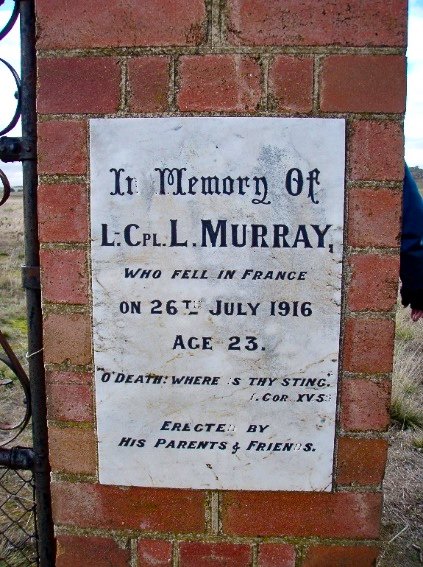

His name also appears on the Australian War Memorial Roll of Honour in Canberra and the Haymarket NSW Government Railway and Tramway Honour Board in Central Station in Sydney.
Lindsay’s Family today
Lindsay was just one of the many Australians to die in WW l, and of course there were huge numbers affected physically and emotionally by this terrible event, but his loss was keenly felt, not only by his immediate family but by generations yet to be born. A nephew, Lindsay Murray (1929-2012) – son of Arch – was named in Lance Corporal Lindsay B. Murray’s honour and great-niece, Lynne Tocher reports:
“Had I been born a boy, my father intended to name me Lindsay. That was changed to Lynette, the closest to Lindsay he could get at that time when it was considered inappropriate to give a male name to a girl.
Consequently, I have always had a personal interest in my paternal grandmother’s (Edith) eldest brother, Lindsay, whose name was intended for me. From his letters we know that he even signed himself as Lin.
I grew up with the story of how he had died during WWl in France, of wounds he received in battle and that he had spent days in no man’s land before being rescued. So, when I became interested in family history, I was anxious to find out more about this man who my grandmother regarded so highly and whose very large portrait, in army uniform, hung in the back bedroom of her home all through my childhood.”
Lynne, Edith’s granddaughter, still treasures small items of memorabilia that Lindsay sent to Edie and copies of some sent to Elsie when the sisters had left Breadalbane and were living in Sydney.
Lindsay Bertram Murray killed at 23 as a result of the Battle of Fromelles, but remembered always.
The Fromelles Association would love to hear from you

Contacts
(Contact: carla@fromelles.info or geoffrey@fromelles.info).
(Contact: army.uwc@defence.gov.au or phone 1800 019 090).
Donations
If you are able, please contribute to the upkeep of this resource.
(Contact: bill@fromelles.info ).
